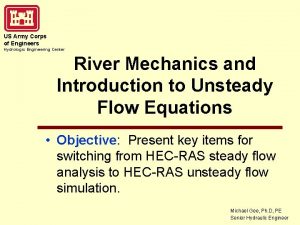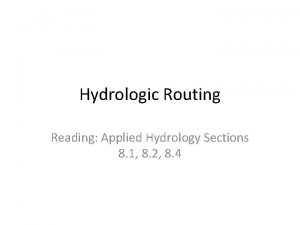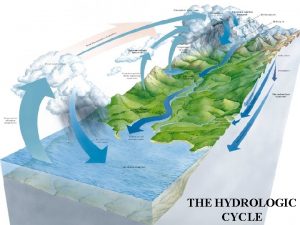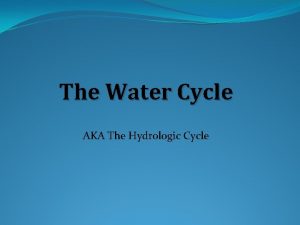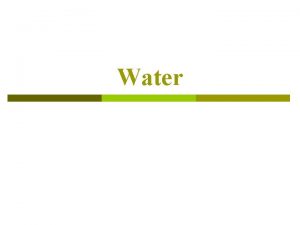The Water Cycle aka the hydrologic cycle The




- Slides: 4

The Water Cycle (aka the hydrologic cycle)

The water cycle transfers water between all living and non-living things on the planet. The water cycle constantly recycles all of the water on Earth. The sun (aka solar radiation) is the driving force behind the water cycle. Gravity is the force that causes runoff. Purpose of the Water Cycle

Accumulation: when water pools in large bodies (e. g. oceans, lakes, etc. ) Condensation: when water vapor (a gas) turns into liquid water Evaporation: when liquid water becomes water vapor Terms to Know Precipitation: when water falls from the clouds (e. g. rain, snow, sleet, etc. ) Subsurface runoff (aka groundwater): when water flows underground in streams, drains, or sewers Surface runoff: water that flows on the surface in streams, rivers, etc. Transpiration: when the water inside plants evaporates into the air Infiltration: when water penetrates the surface

Steps in the Water Cycle 1. Evaporation occurs when the warmth of the sun transforms the liquid water on/within Earth’s surface into water vapor. This water vapor rises into the atmosphere. a. Transpiration is a form of evaporation. 2. Condensation occurs when this water vapor cools in the atmosphere and becomes liquid water again. 3. Precipitation occurs when the water molecules in the atmosphere gather together, getting heavy enough to fall from the clouds. a. Infiltration happens during this step. 4. Accumulation occurs when the falling precipitation gathers together on/within Earth’s surface. a. Runoff is a form of accumulation.


